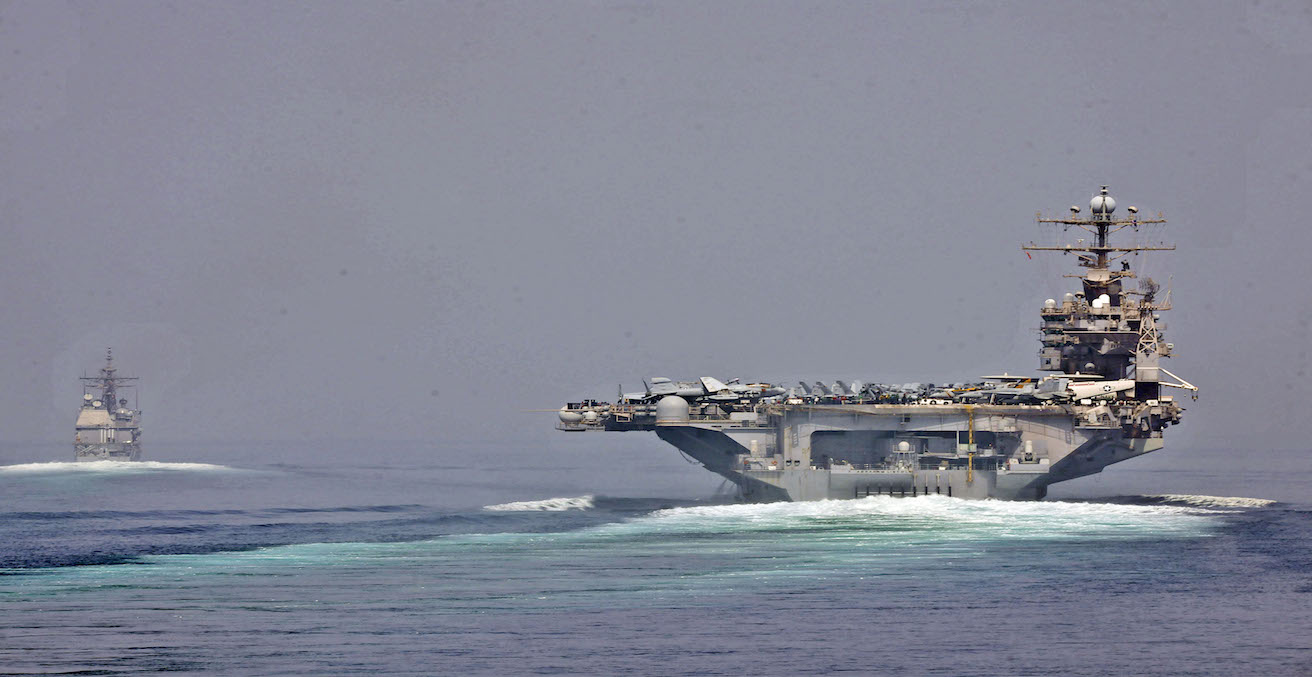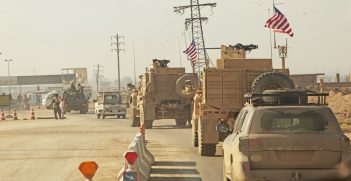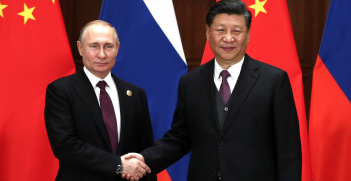US Withdrawal From the JCPOA: A New Entanglement for Australia?

Trump’s withdrawal from the Middle East following the Iran nuclear agreement has been part of a long-term exit strategy, but could potentially lead to risky regional entanglements for both the US and Australia.
Australia’s recent decision to join the United States’ mission of protecting international shipping in the Strait of Hormuz, highlights how the US abandonment of the Joint Comprehensive Plan of Action (JCPOA) has compelled Australia and the US to divide its attention between the Persian Gulf and China in the Pacific. This may be detrimental as it risks drawing the United States and Australia into another entanglement in the Middle East when greater strategic imperatives lay in the Pacific.
The Trump administration justified its withdrawal from the JCPOA as it did nothing pertaining to Iran’s regional activities in Yemen, Iraq and Syria, as well as its support for Hamas and Hezbollah. Although this is true, the nuclear deal did not intend to address these concerns. Rather the JCPOA was designed to be part of a larger strategy for the US to exit from costly conflicts in the Middle East in order to concentrate on the greatest power shift, the rise of China.
At the start of his tenure, President Obama had already expressed his distaste for both wars in Iraq and Afghanistan. He stated that the invasion of Iraq did not serve US interests and “never should have been authorised and never should have been waged.” As the violent instability and insurgencies in Iraq and Afghanistan continued to mount, Obama recognised the need to transition US efforts towards more compelling geo-political priorities, such as the rise of China. Hence, the administration outlined its Pivot to Asia policy in Secretary of State Hillary Clinton’s piece, titled America’s Pacific Century, to ensure the peaceful rise of China while maintaining US primacy in the region. Thus, strategic initiatives such as the attempted Trans-Pacific Partnership free-trade agreement and the US troop deployment to Darwin emerged to demonstrate the US commitment and resolve towards the region.
To effectively “rebalance” towards Asia, exhausting US commitments in the Middle East, particularly Iraq and Afghanistan needed to be somewhat ended. Obama’s deputy national security advisor, Ben Rhodes, echoed this idea by defining these “two countries which frankly aren’t going to be shaping the 21st century.” Moreover, the US had to avoid further entrapment from emerging civil wars in Syria and Libya. Amidst this increasingly chaotic backdrop, the Obama administration entered negotiations on Iran’s nuclear program.
Iran has large stakes in most of these ongoing conflicts in the Middle East, notably Syria and Iraq, which pertain to its speculated forward defence strategy, as well as its rivalry with Saudi Arabia. Iran is also concerned with the future of Afghanistan given its proximity to its border. For the US, the prospect of a nuclear armed Iran was alarming given its potential to exacerbate existing regional tensions. Therefore, to successfully exit these unwinnable conflicts and avoid a nuclear armed Iran, the US needed to negotiate with the actor whom had the largest involvement and influence in these conflicts — Iran.
The Obama administration recognised that negotiations on curbing Iran’s nuclear program in exchange for sanction relief would not only constrain its nuclear capacity, it could also be an avenue for further negotiations on these ongoing conflicts. Although there were several previous attempts to negotiate on Iran’s nuclear program since 2002, it was the US decision to participate in 2012, which led to the successful agreement in 2015. In 2013, the Obama administration opened a back channel with Iran, which eventuated into secret bilateral meetings in Oman that ultimately created the momentum and right conditions for establishing the deal.
Despite the perceived success of the JCPOA agreement in 2015, it wasn’t without its critics. Many pointed out that the deal does nothing to stop Iran from its regional activities, especially in Iraq and Syria. The Trump administration has reiterated this rhetoric and stipulated that Iran must give up its nuclear program and cease its support for US designated terrorist entities including Hezbollah, Hamas and other militia groups in Iraq and Syria. However, the Joint Comprehensive Plan of Action (JCPOA) was a plan of action not a final agreement in US-Iran relations.
Ben Rhodes articulated that the JCPOA did not intend to address and compel Iran to stop its regional activities that affected US interests, rather it would be the base to launch further negotiations on these issues. The deal may have created an ideal negotiating environment given that there would be empowered moderates who would be emboldened by the economic benefits of JCPOA and international integration. This would include figures such as the current President Hassan Rouhani and Foreign Minister Mohammad Zarif.
However, Trump’s withdrawal benefited anti-US hardliners and conservatives domestically such as the head of the Iranian Revolution Guard Corps, Qasim Soleimani. Additionally, it can be contemplated that if the deal remained and brought further economic benefits and international integration, the current supreme leader, Ayatollah Khamenei, may have suggested his successor to be from the reformist camp. Thus, potentially furthering ties between Iran and the West.
Therefore, the Trump administration is correct in identifying the flaws of the JCPOA. Yet, it is apparent that Trump may have overlooked the long-term strategic rationale behind the nuclear agreement and reduce US exposure in the Middle East in order to focus on Asia. The US withdrawal has already forced it to increase its commitment to the region as indicated by the US patrols in the Strait of Hormuz at a time of increased tensions in the South China Sea. For US allies, such as Australia, the abandonment of the JCPOA is already risking a new costly predicament in the Middle East. This may be detrimental for Australia given that its focus should be in the South Pacific were arguably its fundamental interest lies.
However, Prime Minister Scott Morrison stated Australia’s contribution to the US mission in the Strait of Hormuz will be relatively “modest and time-limited” if there is any significant escalation between the US and Iran, Australia will most likely be requested to assist. This may divert Australia’s resources and attention away from its priorities outline in its 2016 White paper including a “secure nearer region” and a “stable Indo-Pacific region” towards a new entanglement in the Middle East.
Jon Norling is a PhD candidate at the Australian National University. His research focuses on the U.S-Iraq relations. You can follow him @Jon_N101
This article is published under a Creative Commons Licence and may be republished with attribution.





